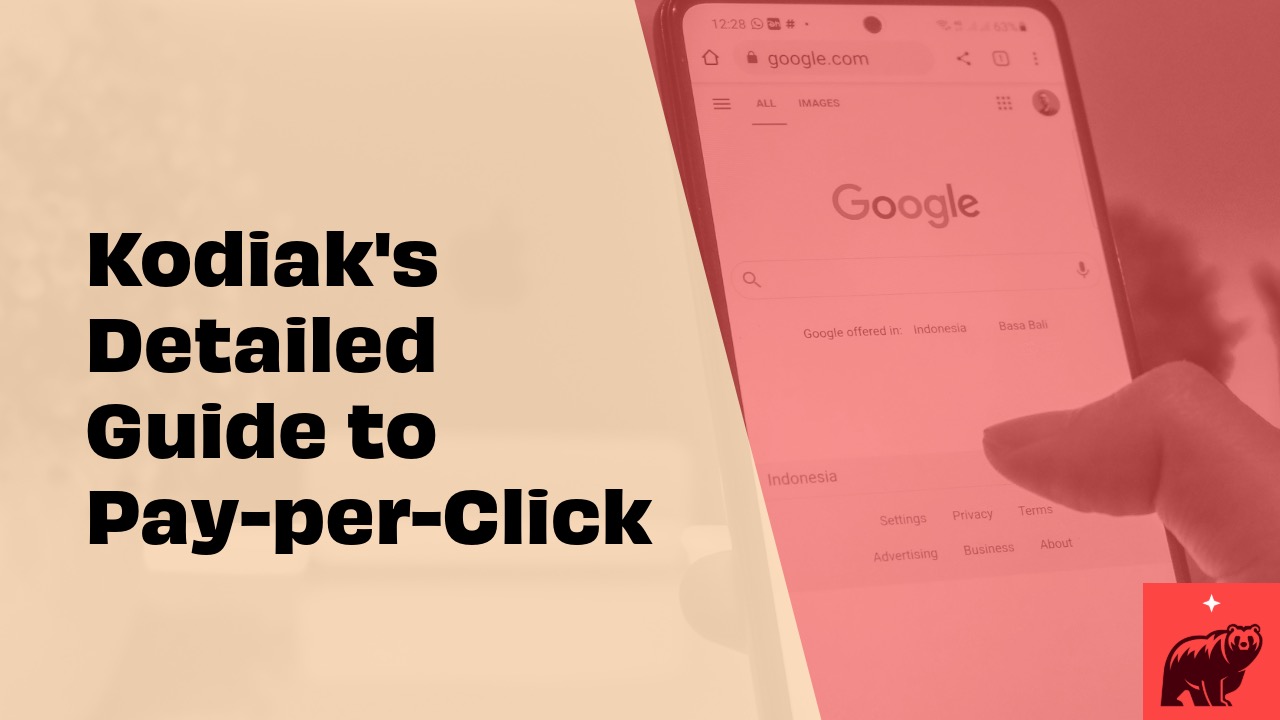In the dynamic landscape of digital marketing, Pay-Per-Click (PPC) advertising stands as a powerful tool for businesses seeking to achieve specific marketing objectives. For many businesses, PPC is essential for reaching potential customers actively searching for their products or services. Unlike traditional marketing, which can sometimes feel like casting a wide net, PPC, when executed strategically, allows for precise Ad Targeting. Kodiak is committed to helping businesses navigate the complexities of PPC to drive meaningful results.
Understanding PPC
Pay-Per-Click (PPC) is an advertising model where advertisers pay a fee each time one of their ads is clicked. Essentially, it’s a way to buy visits to your site, rather than earning those visits organically through SEO. Search engines like Google, through its Google Ads platform, are a primary venue for PPC advertising. Advertisers bid on keywords relevant to their target audience. When someone searches for that keyword, an ad might appear at the top or bottom of the search results page. The ad’s position is determined by factors like the Bid Strategy, Quality Score, and Ad Rank.
The Importance of Psychographics in PPC
Traditionally, PPC campaigns relied heavily on demographic data and keyword matching. While these elements remain important, Kodiak believes in the power of psychographics to enhance Ad Targeting. Psychographics involve understanding your audience’s values, attitudes, interests, and lifestyles. It allows us to go beyond simply knowing who your customers are to understanding why they make purchasing decisions. By tapping into their motivations and preferences, we can craft PPC campaigns that resonate on a deeper level.
Key Components of a Successful PPC Campaign
Several factors contribute to the success of a PPC campaign:
- Keyword Research: Identifying the right keywords is fundamental. This involves understanding what your target audience is searching for. Effective Keyword Research helps ensure your ads are shown to the right people.
- Ad Targeting: Precisely defining your target audience is crucial. Ad Targeting options include demographics, interests, location (Geotargeting), and even behaviors. Platforms like Google Ads also offer Lookalike Audience targeting, which helps you reach new users similar to your existing customers.
- Ad Copy: Your ad copy must be compelling and relevant to the keywords and target audience. It should clearly communicate your Value Proposition and encourage users to click.
- Bid Strategy: Your Bid Strategy determines how much you’re willing to pay for each click. There are various Bid Strategy options available, including automated bidding strategies that use machine learning to optimize your bids.
- Landing Page: The Landing Page experience is critical. Your Landing Page should be relevant to the ad and provide a seamless user experience that encourages conversions.
- Quality Score: Google assigns a Quality Score to your ads and keywords. A higher Quality Score can lead to better ad positions and lower Cost Per Click (CPC).
- Ad Extensions: Ad Extensions provide additional information about your business, such as your location, phone number, or website links. They can improve your ad’s visibility and Click-Through Rate (CTR).
Optimizing Your PPC Campaigns
PPC is not a “set it and forget it” activity. Continuous optimization is essential for maximizing your return on investment. This includes:
- Monitoring Key Metrics: Track important metrics such as Click-Through Rate (CTR), Conversion Rate, Cost Per Click (CPC), and Customer Acquisition Cost (CAC).
- A/B Testing: Experiment with different ad copy, Landing Page variations, and Bid Strategy options to identify what works best.
- Negative Keywords: Use Negative Keywords to prevent your ads from showing for irrelevant searches.
- Remarketing: Retargeting or Remarketing campaigns allow you to reach users who have previously interacted with your website but didn’t convert.
PPC Platforms and Networks
While Google Ads is the dominant PPC platform, other options exist. Social media platforms like Facebook, Instagram, and LinkedIn offer robust Ad Network capabilities. Understanding the strengths and weaknesses of each platform is crucial for developing an effective PPC strategy. For example, Display Ads on the Google Display Network can be a powerful tool for increasing brand awareness.
Budgeting and Scheduling
Effective PPC campaigns require careful budgeting and Ad Scheduling.
- Budget: Determine a realistic Budget for your PPC campaigns. Consider your marketing goals and the potential return on investment.
- Ad Scheduling: Ad Scheduling allows you to control when your ads are shown. This can be useful for targeting your audience when they are most likely to be online and engaged.
- Frequency Capping: Frequency Capping limits the number of times a user sees your ad, preventing ad fatigue.
PPC and Business Growth
PPC can be a valuable tool for businesses at all stages, from Bootstrapping startups to established enterprises. It can drive traffic, generate leads, and increase sales. For startups, PPC can be a quick way to gain visibility while building organic search presence. It’s important to align your PPC efforts with your overall Business Model and Revenue Streams.
- Market Research: Before launching any PPC campaign, conduct thorough Market Research to understand your target audience, competitors, and industry trends.
- MVP (Minimum Viable Product): PPC can be used to test the market demand for a MVP (Minimum Viable Product) or service.
- Scaling: Once you’ve established a successful PPC campaign, you can begin Scaling your efforts to reach a wider audience and achieve greater results.
- Goal Setting: Set clear and measurable goals for your PPC campaigns. This will help you track your progress and measure your success.
- Accountability Partner: Consider working with an Accountability Partner or a digital marketing agency like Kodiak to help you stay on track and achieve your goals.
Kodiak: Your Partner in PPC Success
At Kodiak, we understand that PPC can be complex. We’re here to help you navigate the intricacies of PPC advertising and develop effective strategies that deliver results. We focus on data-driven insights and transparent communication to ensure your campaigns are aligned with your business objectives.
Conclusion
PPC offers businesses a powerful way to reach their target audience, drive traffic to their website, and achieve their marketing goals. By understanding the key components of a successful PPC campaign and optimizing your efforts.
Contact Kodiak today and let us help you unlock the full potential of PPC and achieve sustainable business growth.







